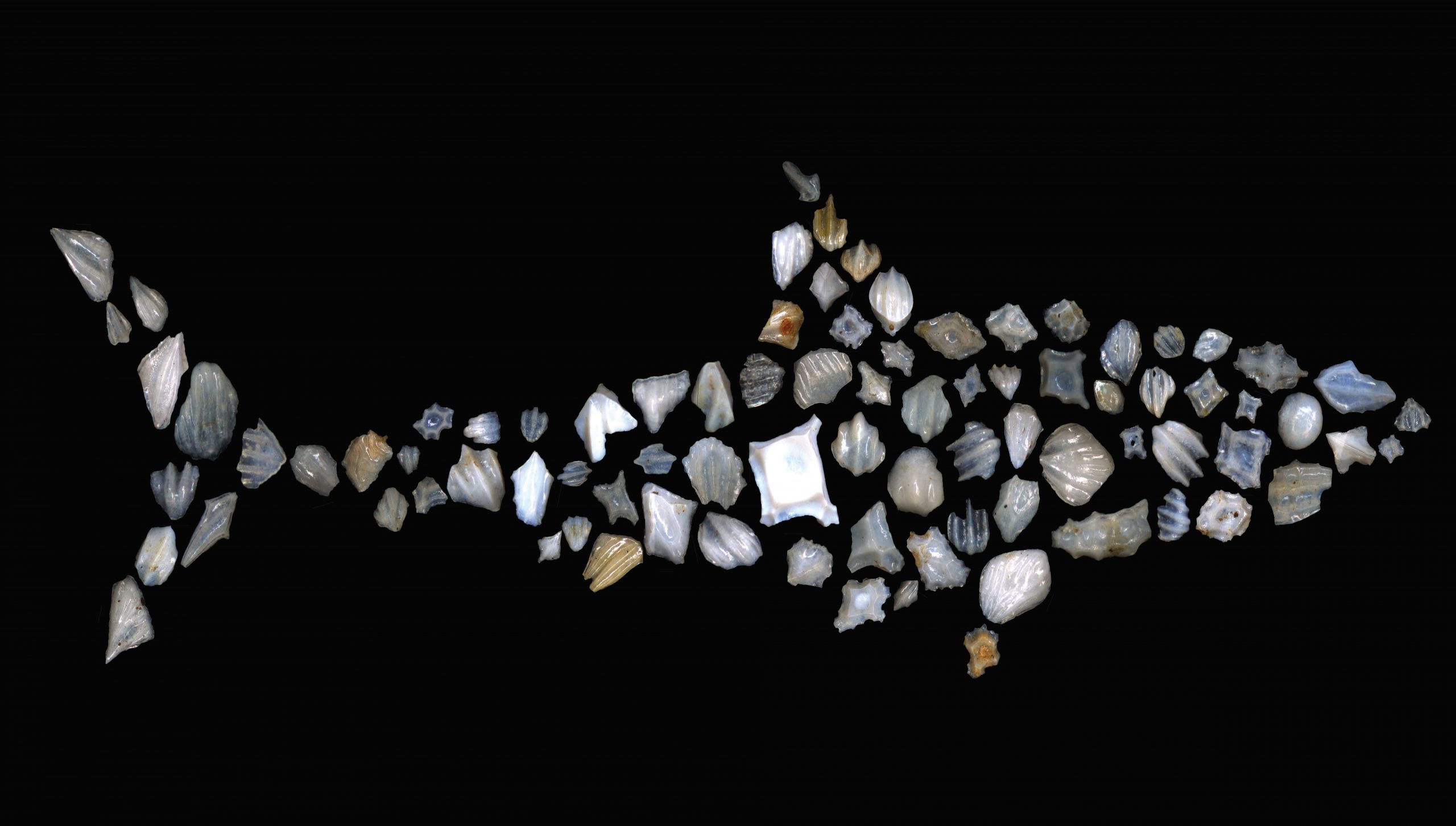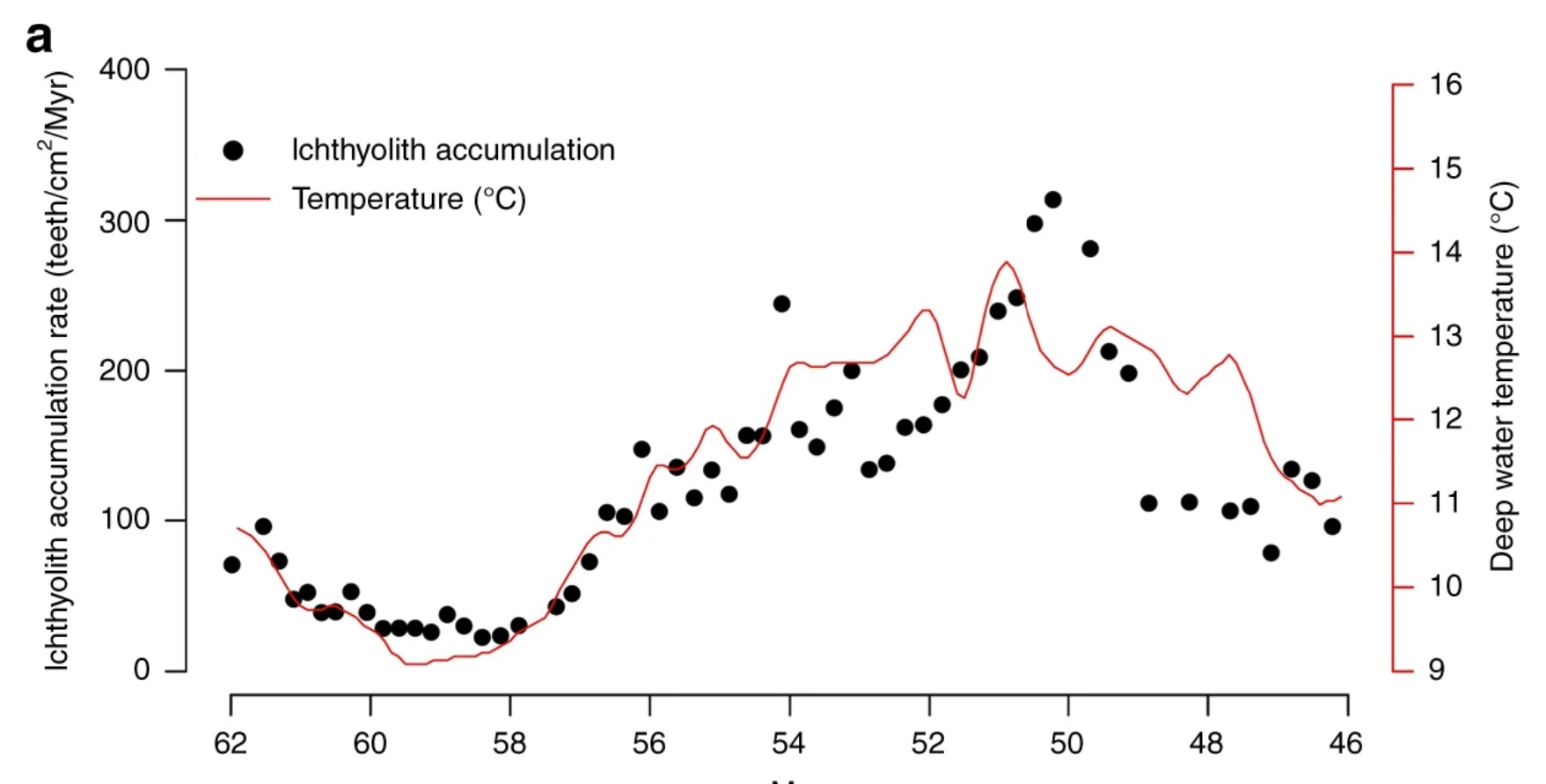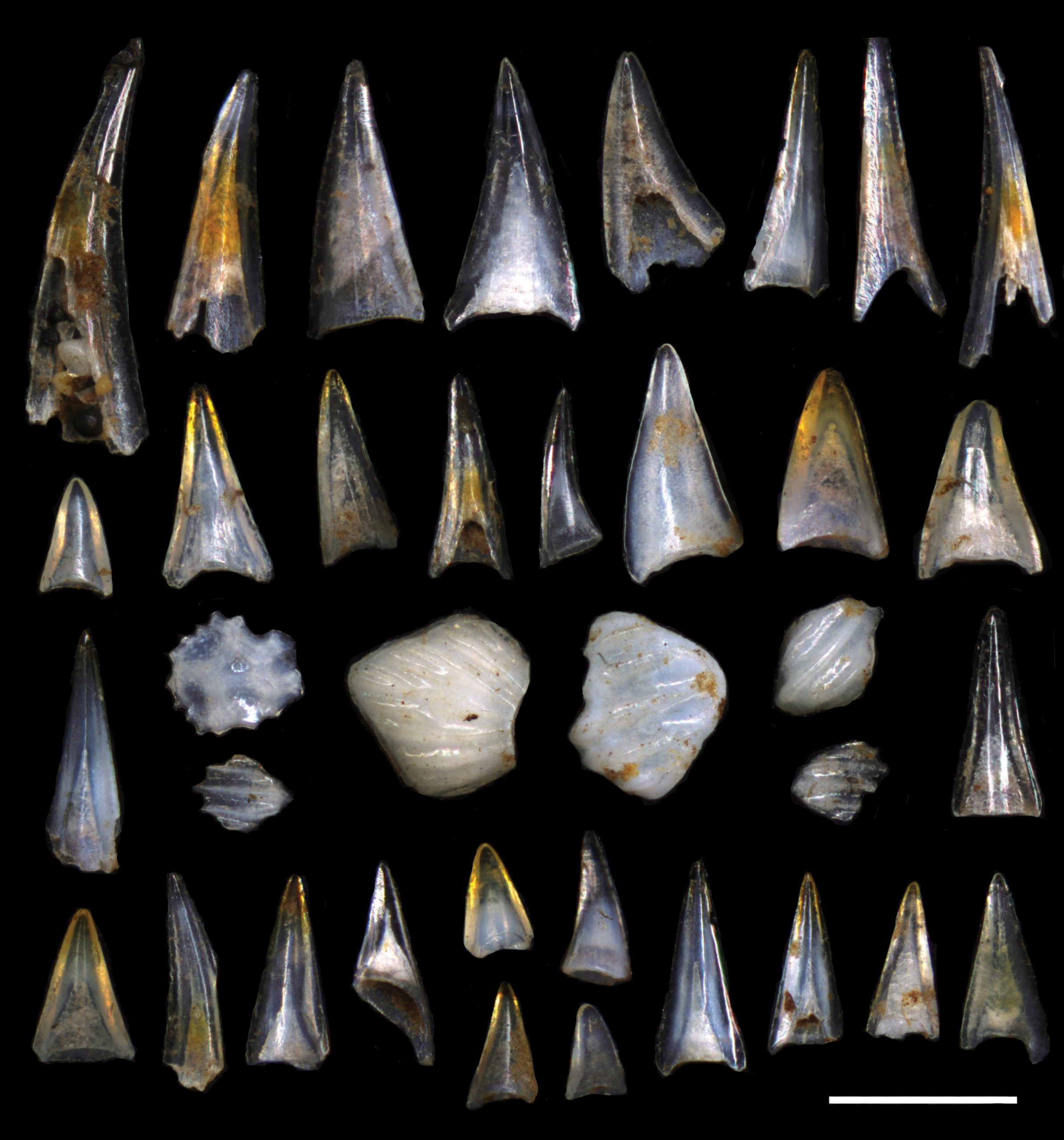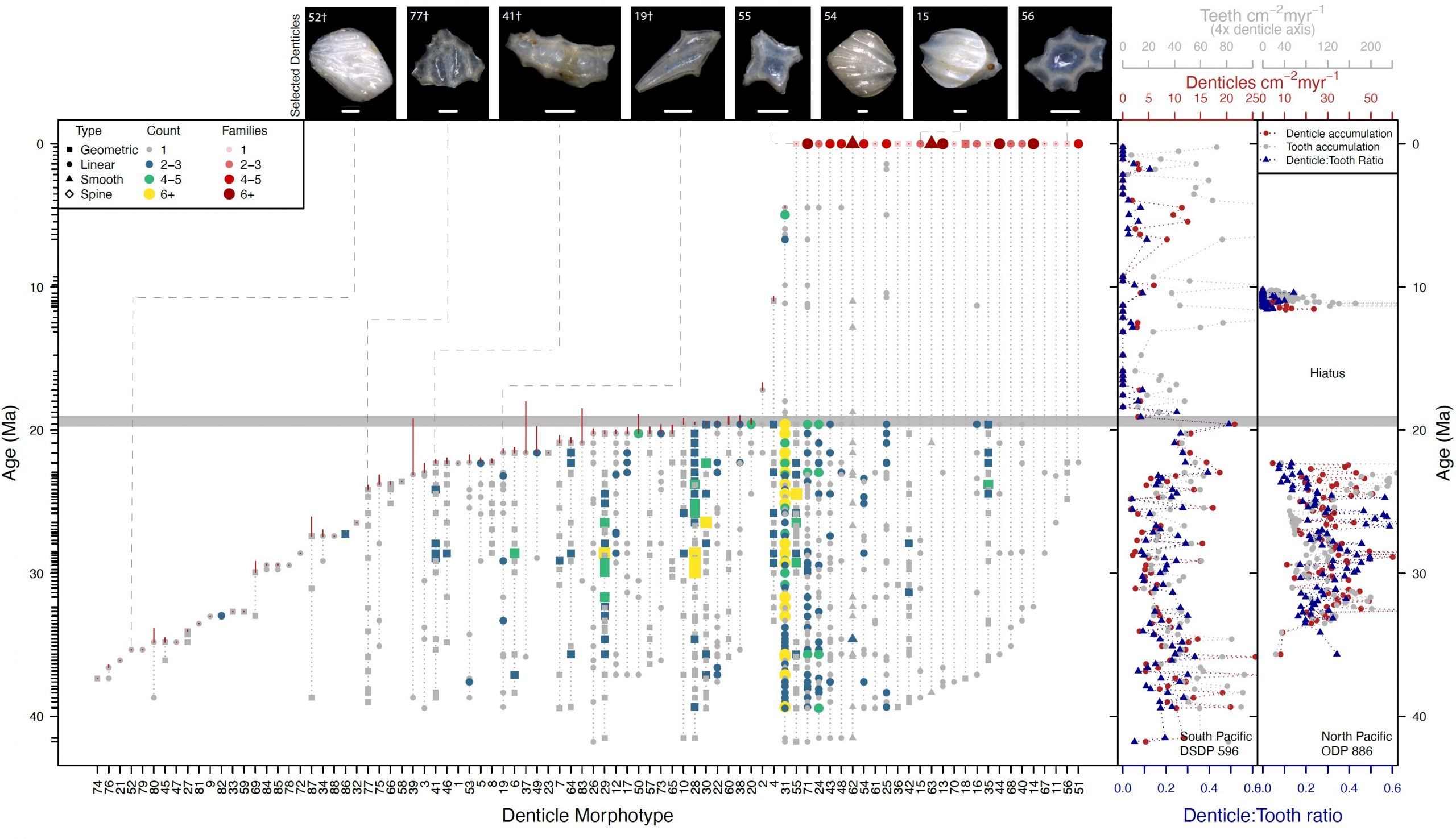Research
The Paleo-FISHES Lab explores marine ecosystem dynamics in deep time. We use microfossils preserved in deep-sea sediments, primarily ichthyoliths (isolated microfossil fish teeth and shark scales), to reconstruct fish and shark abundance, biodiversity, and evolutionary processes over the past ~100 million years, observing how life and climate interact across scales. In addition to work on deep-time projects, we are involved with projects looking at modern fish and shark functional morphology, asking questions about how modern biology can inform fossil interpretation, as well as how fossil diversity can inform modern fields such as conservation and bio-inspired engineering. Below are just a few projects which are ongoing in the lab, to give a flavor of the types of questions we work on.

Sharks in 3D: Dermal Denticles in Deep Time
Sharks are among the oldest vertebrates on the planet, with a fossil record stretching back over 400 million years. The Deep Time aspect of this project uses fossil denticles – the tiny scales covering a shark’s body to elucidate shark ecological and evolutionary processes throughout their evolutionary history. Projects using fossil denticles explore how sharks have responded to past mass extinctions, shed light on how sharks have responded to ancient global warming events, and even reveal how sharks and humans have interacted over the past 10,000 years in coastal communities around the globe. This project is part of a larger NSF-Funded Integrative Biology project (NSF IntBIO #2403839) in collaboration with colleagues George Lauder (Harvard University, fluid dynamics and bio-inspired design) and Gareth Fraser (University of Florida, developmental biology). Together we are exploring the wide diversity of shark denticle morphology, from the genetic underpinnings of shape to the applications of novel fossil denticles in fluid dynamic systems and bio-inspired design.

Marine Ecosystem Dynamics in a Hothouse World: Cretaceous and Paleogene Fish Community Evolution
Understanding how fish and sharks have responded to past extreme global temperature conditions is integral to understanding and potentially mitigating the threats posed by anthropogenic climate change today. Although the rate of change today is unrivaled, modern anthropogenic climate change models indicate that in the upcoming centuries, we will reach levels of atmospheric CO2 last seen only during some of the most extreme climate conditions in Earth's recent history: the Early Eocene Climate Optimum (~52-49 million years ago), and the Cretaceous Oceanic Anoxic Event 2 (~93 mlilion years ago). Investigating marine ecosystem dynamics during such past climate extremes is paramount for understanding potential future changes. The Paleo-FISHES Lab is exploring Paleogene and Cretaceous fish community production, evolution, and community structure across several major global hothouse intervals in Earth's history, and there is always more to do. At present, we are exploring fish community dynamics during the Paleogene of the Southern Ocean as part of my ongoing post-cruise research for IODP Expedition 378, and developing records of fish and sharks across OAE2. Additional research is exploring the Middle Eocene Climate Optimum (MECO), as well as the Paleocene-Eocene Thermal Maximum (PETM).

An Analytical Toolkit and Pipeline for Ichthyolith Research
Microfossil fish teeth and shark scales (“ichthyoliths”) are the most numerically abundant vertebrate fossils on the planet, however leveraging their fossil record is challenging due to their small size and relative rarity in marine sediments, as well as a lack of taxonomic framework for interpretation. Ongoing work in the Paleo-FISHES Lab aims to develop easy-to-use, machine-learning assisted toolkits for high thru-put analyses of ichthyolith morphology, with systems in development for both teeth and denticles. You can find updates to this process and use the toolkit from the ichthyoliths R package GitHub page: https://github.com/esibert/ichthyoliths

Investigating the Early Miocene Extinction Enigma
The Early Miocene (~23-16 million years ago) is an understudied interval of Earth's history, due in part to being overshadowed by the Middle Miocene Climate Optimum (~16-13 million years ago), and in part due to a significant lack of preservation of sediment from the interval. However, recent evidence from both paleoceanographic and paleontological studies indicates that there was a major restructuring of marine ecosystems in the middle of the Early Miocene, ~19 million years ago. From nutrient distributions (Auderset et al 2022) to global foraminifera community upheval (Swain et al 2024), to the largest known mass extinction of sharks (Sibert and Rubin 2021), the nature of the marine community changed completely during this event, yet we have no idea what may have caused it. Ongoing work in the Paleo-FISHES Lab is exploring potential causal mechanisms and gathering additional paleontological and paleoceanographic datasets from the interval to better understand this critical interval of the Early Miocene.